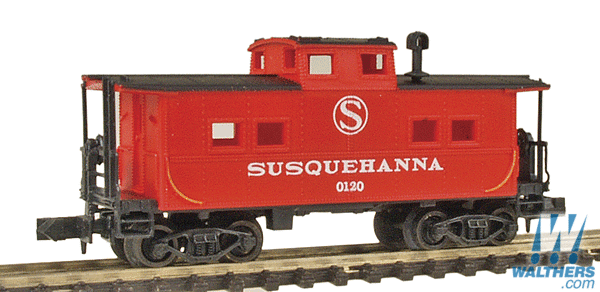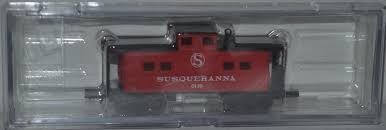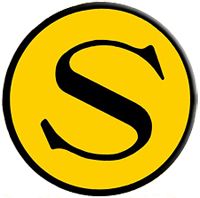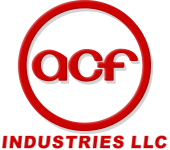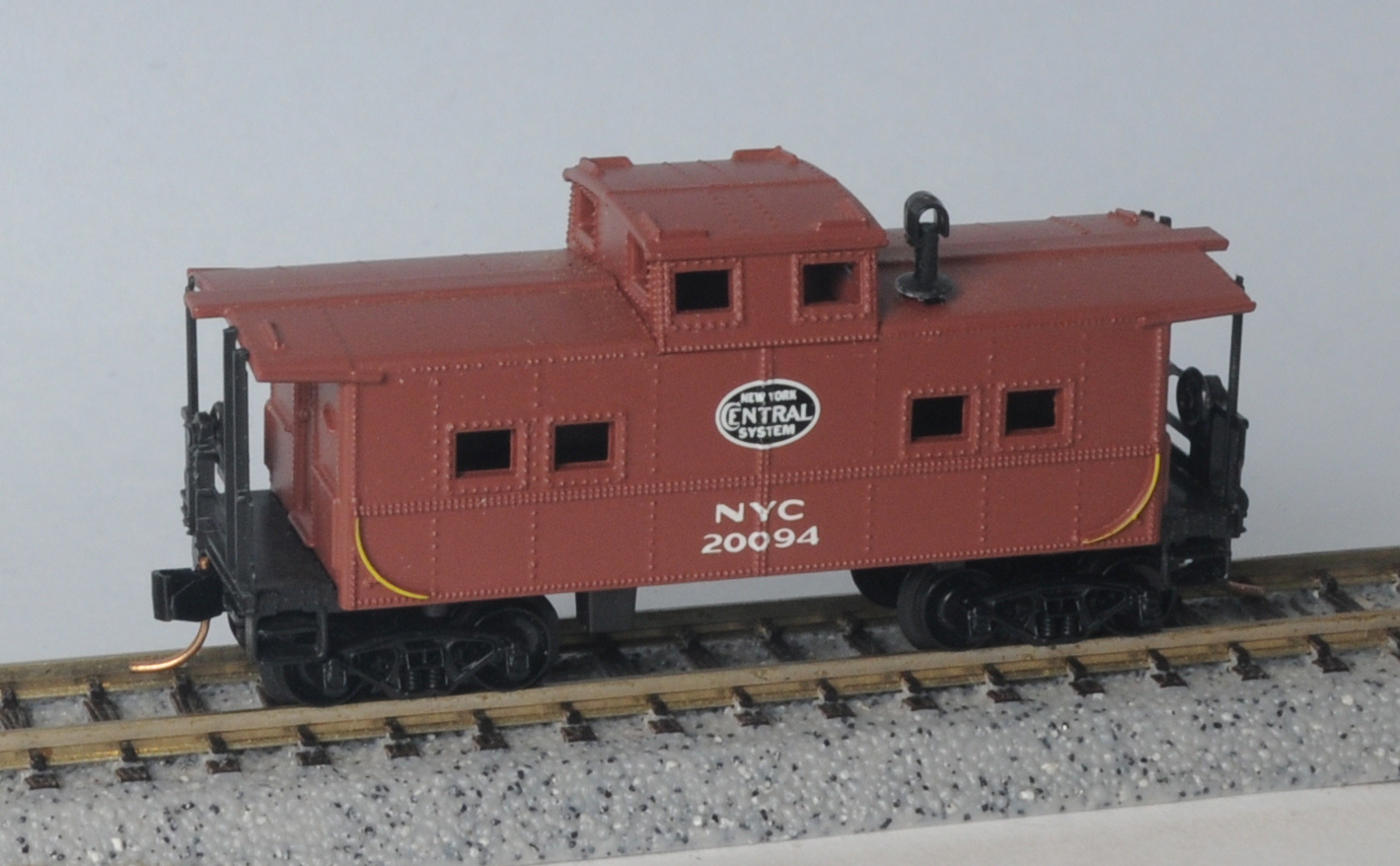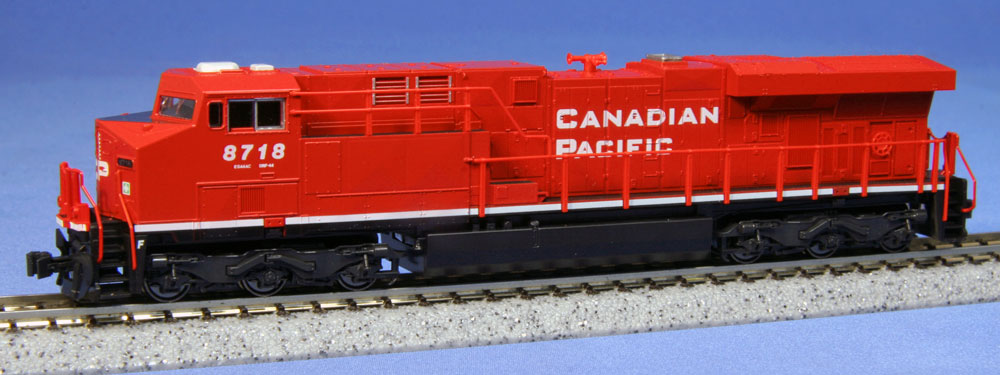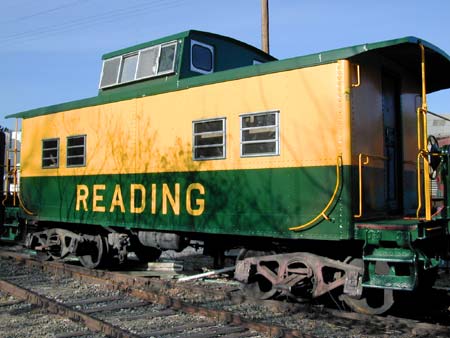Model Information: Life-Like first introduced this body style in the 90's. They have metal wheels and truck-mounted Rapido couplers. The caboose design is based on a common prototype used by many Northeastern roads.
Prototype History: The Northeast or NE style caboose was introduced by the Reading Railroad in 1924. The design was an all-steel version of a USRA design. The acquisition of these new cabooses was prompted by proposed Pennsylvania legislation requiring larger, more structurally sound caboose for use in through freight consists. The original set of cabooses was ordered from AC&F, but other manufacturers also adopted similar designs.
The Reading selection was made after the consideration of several designs. The original purchase was for 10 cars in 1924, but the design was so effective that it became the de-facto Reading standard and they continued purchasing new cabooses of this type through 1948. The design soon became popular with other Northeastern railroads such as the WM, L&NE, LV, CNJ and others.
The Reading selection was made after the consideration of several designs. The original purchase was for 10 cars in 1924, but the design was so effective that it became the de-facto Reading standard and they continued purchasing new cabooses of this type through 1948. The design soon became popular with other Northeastern railroads such as the WM, L&NE, LV, CNJ and others.
Road Name History: The New York, Susquehanna & Western Railway (reporting mark NYSW) (a.k.a. the Susie-Q or the Susquehanna) is a Class II American freight railway operating over 500 miles (800 km) of track in the northeastern states of New York, Pennsylvania and New Jersey. It was formed in 1881 from the merger of several smaller railroads. Passenger service in Northern New Jersey was offered until 1966. The railroad was purchased by the Delaware Otsego Corporation in 1980, and became a regional player during the 1980s in the intermodal freight transport business.
The New York, Susquehanna & Western can trace its roots back to the Hoboken, Ridgefield & Paterson Railroad, chartered in 1866 to connect industrial Paterson, New Jersey, with the ports along the Hudson Waterfront opposite New York City at Hoboken. That same year, the New York and Oswego Midland Railroad was chartered to connect the Great Lakes port at Oswego, New York, with New York City. Several competing companies sprang up in 1867, but the New Jersey Western was the most successful, constructing westward from Paterson and Hawthorne. Cornelious Wortendyke, president of the New Jersey Western Railroad (NJW), signed a lease agreement with DeWitt Clinton Littlejohn of the New York, Ontario and Western Railway (NYO&W) giving his road a through route into New Jersey. Construction on the NY&OM started in 1868 and progressed rapidly. The NJW changed its name to the New Jersey Midland Railway in 1870, and construction had stretched from Hackensack, New Jersey, all the way through to Hanford.
Currently, the NYS&W operates over 500 miles of track in three states. The network consists of three main routes, one running from Northern New Jersey to Binghamton and the other two branching north from Binghamton to serve Utica and Syracuse.
The New York, Susquehanna & Western can trace its roots back to the Hoboken, Ridgefield & Paterson Railroad, chartered in 1866 to connect industrial Paterson, New Jersey, with the ports along the Hudson Waterfront opposite New York City at Hoboken. That same year, the New York and Oswego Midland Railroad was chartered to connect the Great Lakes port at Oswego, New York, with New York City. Several competing companies sprang up in 1867, but the New Jersey Western was the most successful, constructing westward from Paterson and Hawthorne. Cornelious Wortendyke, president of the New Jersey Western Railroad (NJW), signed a lease agreement with DeWitt Clinton Littlejohn of the New York, Ontario and Western Railway (NYO&W) giving his road a through route into New Jersey. Construction on the NY&OM started in 1868 and progressed rapidly. The NJW changed its name to the New Jersey Midland Railway in 1870, and construction had stretched from Hackensack, New Jersey, all the way through to Hanford.
Currently, the NYS&W operates over 500 miles of track in three states. The network consists of three main routes, one running from Northern New Jersey to Binghamton and the other two branching north from Binghamton to serve Utica and Syracuse.
Brand/Importer Information:  Life-Like Products LLC (now Life-Like Toy and Hobby division of Wm. K. Walthers) was a manufacturer of model railroad products and was based in Baltimore, Maryland.
Life-Like Products LLC (now Life-Like Toy and Hobby division of Wm. K. Walthers) was a manufacturer of model railroad products and was based in Baltimore, Maryland.
It was founded in the 1950s by a company that pioneered extruded foam ice chests under the Lifoam trademark. Because ice chests are a summer seasonal item, the company needed a way to keep the factory operating year round. As model railroading was becoming popular in the post-war years, they saw this as an opportunity and so manufactured extruded foam tunnels for model trains. Over the years, Life-Like expanded into other scenery items, finally manufacturing rolling stock beginning in the late 1960s. At some point in the early 1970s, Life-Like purchased Varney Inc. and began to produce the former Varney line as its own.
The Canadian distributor for Life-Like products, Canadian Hobbycraft, saw a missing segment in market for Canadian model prototypes, and started producing a few Canadian models that were later, with a few modifications, offered in the US market with US roadnames.
In 2005, the company, now known as Lifoam Industries, LLC, decided to concentrate on their core products of extruded foam and sold their model railroad operations to Wm. K. Walthers.
In June 2018, Atlas and Walthers announced to have reached an agreement under which all Walthers N scale rolling stock tooling, including the former Life-Like tooling, will be purchased by Atlas.
Read more on Wikipedia and The Train Collectors Association.

It was founded in the 1950s by a company that pioneered extruded foam ice chests under the Lifoam trademark. Because ice chests are a summer seasonal item, the company needed a way to keep the factory operating year round. As model railroading was becoming popular in the post-war years, they saw this as an opportunity and so manufactured extruded foam tunnels for model trains. Over the years, Life-Like expanded into other scenery items, finally manufacturing rolling stock beginning in the late 1960s. At some point in the early 1970s, Life-Like purchased Varney Inc. and began to produce the former Varney line as its own.
The Canadian distributor for Life-Like products, Canadian Hobbycraft, saw a missing segment in market for Canadian model prototypes, and started producing a few Canadian models that were later, with a few modifications, offered in the US market with US roadnames.
In 2005, the company, now known as Lifoam Industries, LLC, decided to concentrate on their core products of extruded foam and sold their model railroad operations to Wm. K. Walthers.
In June 2018, Atlas and Walthers announced to have reached an agreement under which all Walthers N scale rolling stock tooling, including the former Life-Like tooling, will be purchased by Atlas.
Read more on Wikipedia and The Train Collectors Association.
Item created by: Alain LM on 2017-10-08 04:35:06. Last edited by CNW400 on 2020-05-19 13:01:13
If you see errors or missing data in this entry, please feel free to log in and edit it. Anyone with a Gmail account can log in instantly.
If you see errors or missing data in this entry, please feel free to log in and edit it. Anyone with a Gmail account can log in instantly.


